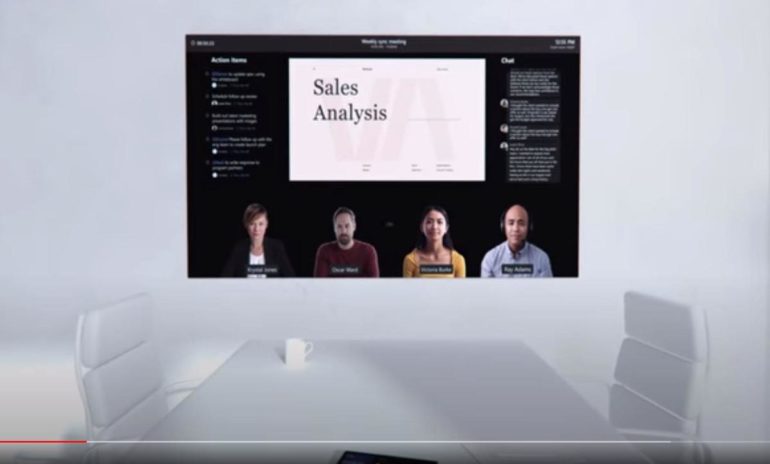Microsoft officials are circulating a new video today showing off how hybrid meetings of the future might look and work, based on Microsoft’s own experience and research. In addition to the video, Microsoft CEO Satya Nadella has a LinkedIn post about the company’s latest thinking around hybrid work, as well as a some resources for customers who are interested in going all-in on Microsoft technologies in order to replicate some of the scenarios Microsoft is implementing itself.
The interesting thing about the company’s latest vision for meetings of the future is that it’s already achievable today. The centerpiece to making it happen are a couple of services that Microsoft sells. One is called Teams Rooms Standard and the other, Teams Rooms Premium, which adds a white-glove Microsoft managed meeting rooms service. These are Teams-based services for setting up and managing conference rooms.
The three scenarios Microsoft highlights in its latest video are for three differently sized and scaled spaces: A Focus Room, Medium Space and a Large Space.
The smallest of these, the Focus Room, features a Teams panel, a 60-inch display, Teams Rooms system, an intelligent speaker, a 180-degree field-of-view camera and a content camera. These devices are all available from Microsoft itself and Teams-Rooms-certified hardware partners. The Large Space calls for a Teams panel, two 70-inch displays, a Microsoft Teams Room system, ceiling-tile mic and DSP, two speakers, an active speaker-tracking camera and an 85-inch Surface Hub.
The meeting-room camera and speaker systems cost thousands of dollars. The 85-inch Surface Hub device, in an of itself, costs roughly $22.000. A Teams Room Standard subscription costs $15 per device per month. Teams Room Premium costs $50 per device per month.
Microsoft also is making available for download a set of human-resources checklists and templates that it developed itself to help managers figure out when and how to allow employees to work remotely at least part of the time. It also has published its Hybrid Work Guide for Business Leaders, which is largely a guide to Microsoft products and how they fit into the company’s digital transformation strategy.
Microsoft officials said earlier this year https://www.zdnet.com/article/microsoft-to-partially-reopen-its-redmond-campus-march-29-and-possibly-fully-reopen-on-july-6/, while enabling most employees to work up to 50 percent of the time remotely.



